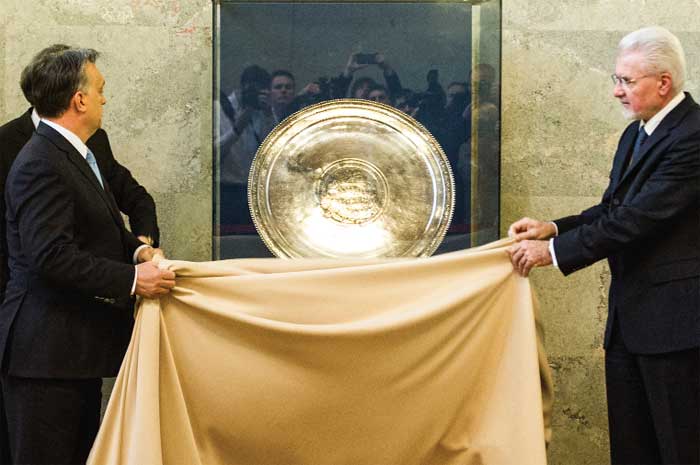Auctions
Controversy Still Haunts Sevso Ancient Roman Silver Stolen From Hungary


Sarah Cascone

The tale of the Sevso hoard of stolen ancient Roman silver continues, with only half the treasure back in Hungary, the Art Newspaper reports. Seven of 14 large pieces of silverware, including a hunting plate with an inscription that helped establish Hungary’s claim, have been returned to Budapest, but the rest remains in London, despite Hungary’s best efforts.
As far as anyone knows, the treasure was rediscovered near Lake Balaton in Hungary in the 1970s. Sotheby’s chairman Peter Wilson began purchasing pieces of the collection in 1980, even though there were no export papers attached to any of the silver until the following year when a (forged) Lebanese permit turned up. From the very start, people were willing to turn a blind eye in order to acquire the priceless antiquities.
Eventually, the auction house enlisted the Lord Northampton to help purchase the rest of the set, with the intent of selling the collection. That plan fell through when the silver’s illicit origins became publicly known in 1990, during a publicity tour for the planned auction in Switzerland.
Hungary, Croatia, and Lebanon each staked their claims, but the New York State Supreme Court ruled that no one could demonstrate that they were the rightful owners. As proof, Hungary pointed to the hunting plate, which identifies a man named Sevso as the owner, and refers to Pelso, the name for Hungary’s Lake Balaton during Roman times. Though Lebanon has since backed off, Croatia has yet to relinquish its claim. Following the hearing, the treasure was returned to Northampton and the Wilson family in London.
In 2006, the entire hoard was reunited for an exhibition at Bonhams. Earlier this year, Hungary finally received a measure of restitution, buying back the seven silver plates for a $20.7 million “retention fee.” The seller was a trust that benefits Wilson’s two sons. Despite the evidence, and the immense difficulty he would have selling the treasure today, Northampton still holds his half of the hoard.
Should Croatia withdraw, Hungary might be able to press its case, but for now the issue lingers. Hungary is eager to reunite the silver, but has little leverage, while Northampton still hopes to turn a profit from his initial investment.
Currently on display at the parliament building in Budapest, the hunting plate and other six pieces will move to the Hungarian National Museum in July.